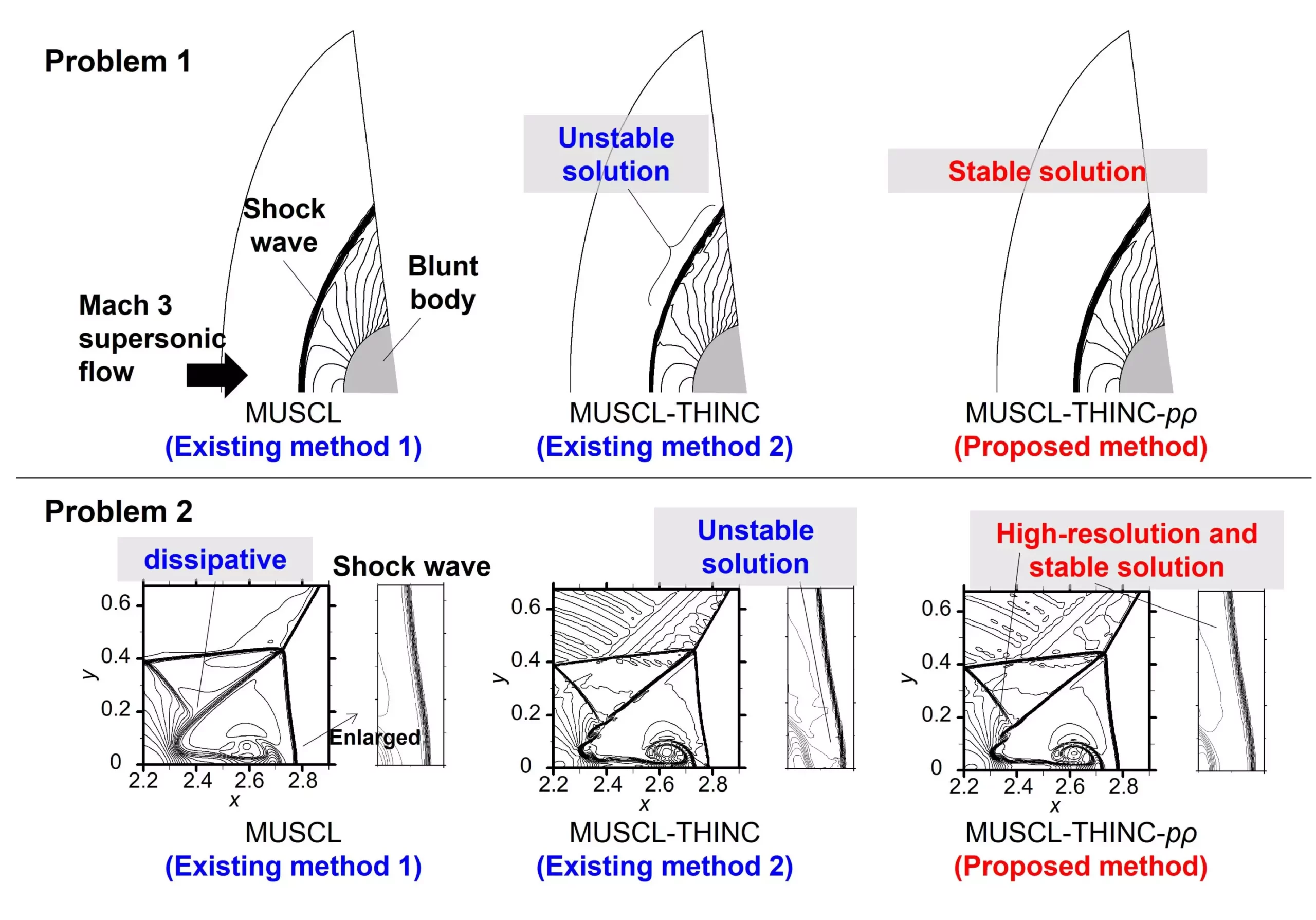In an impressive stride for engineering and computational fluid dynamics, a team of researchers has unveiled an advanced hybrid simulation technique named T-MUSCL, specifically designed to address the intricate challenges posed by compressible flow dynamics. This innovative scheme combines the traditional monotonic upstream-centered schemes for conservation laws (MUSCL) with an additional tangential hyperbolic interface capturing (THINC) method, effectively bridging the gap between theoretical advancements and practical applications in various engineering fields. The significance of this development, as documented in the journal Physics of Fluids on April 10, 2024, is monumental, potentially transforming approaches to fluid dynamic simulations.
Challenges in Traditional Methods
Understanding compressible flow—particularly of gases experiencing significant density variations—has long been a pursuit fraught with complexities. Key issues arise from shock waves and discontinuities that are notoriously difficult to simulate accurately. Traditional methods, while effective in simpler scenarios, often succumb to excessive numerical dissipation, leading to compromised precision, especially in high-stakes domains like aerospace engineering. The conventional MUSCL method, despite its noted advantages in handling straightforward flows with shock waves, proves to be less effective when tackling more complex compressible flows. Researchers have struggled to find a balance between accuracy and simplicity, as many newly developed methods remain overly complicated for practical, real-world applications.
The Advantages of T-MUSCL
The T-MUSCL scheme promises to change that narrative by offering a fresher, more precise alternative. By optimizing the simulation process based on the degree of nonlinearity and the presence of discontinuities in targeted cells, T-MUSCL optimally navigates the physical phenomena involved. It tackles weak shock waves with great sharpness while managing robust strong shock waves effectively. This balance is critical in ensuring that simulations are not just theoretically sound but also practically applicable. With the introduction of two pivotal parameters—a nonlinearity-weighted parameter and a slope-ratio-weighted parameter—the researchers have furnished the T-MUSCL scheme with the capability to enhance the accuracy of simulations significantly, producing smaller errors compared to conventional methods.
Broadening the Horizon for Engineering Applications
One of the most exciting aspects of the T-MUSCL method is its potential for wide-ranging applications across various fields. The simplicity ingrained within its structure means that engineers can seamlessly adopt this method to replace conventional MUSCL approaches without significantly complicating existing algorithms. This aspect positions T-MUSCL as an accessible solution for professionals working in various industries, including aerospace, mechanical engineering, and other sectors reliant on high-fidelity fluid dynamics simulations. Many traditional methods, while theoretically sound, have remained exclusive due to their complexity, but T-MUSCL is set to democratize access to advanced fluid simulation capabilities.
Comparative Advantages in Simulation Speed and Convergence
Convergence behavior is another critical benchmark in evaluating simulation methods. The T-MUSCL scheme has showcased promising advancements in this area as well. It offers improved convergence properties, especially in steady two-dimensional blunt body problems, which have traditionally posed significant challenges in numerical simulations. The scheme’s refined handling of strong shock waves dramatically reduces unstable numerical behaviors, enhancing the overall reliability of fluid dynamics simulations. This enables engineers to obtain high-resolution and robust results, allowing for more accurate predictions and analyses in real-world engineering problems.
Future Directions in Fluid Dynamics Research
This research represents not just a technical advancement but also a shift in perspective regarding how we can understand and depict complex fluid flows. The researchers led by Keiichi Kitamura and Gaku Fukushima are poised to further this momentum by applying their innovative method to actual engineering problems. Their ambitious aim to deepen the grasp of compressible flow dynamics through practical experimentation paves the way for accelerating advancements in various industries. The aspiration for T-MUSCL is not just to be a novel academic curiosity but to become a staple in fluid dynamics research and practical engineering applications.
By enabling researchers and engineers to explore the intricacies of compressible flows and manage complex fluid interactions, T-MUSCL sets the stage for broader, more profound contributions to the fields of aerospace and mechanical engineering. With this innovative hybrid scheme, the fabric of fluid dynamics is woven with new possibilities, promising a future rich with insights and advancements waiting to be harnessed.


Leave a Reply